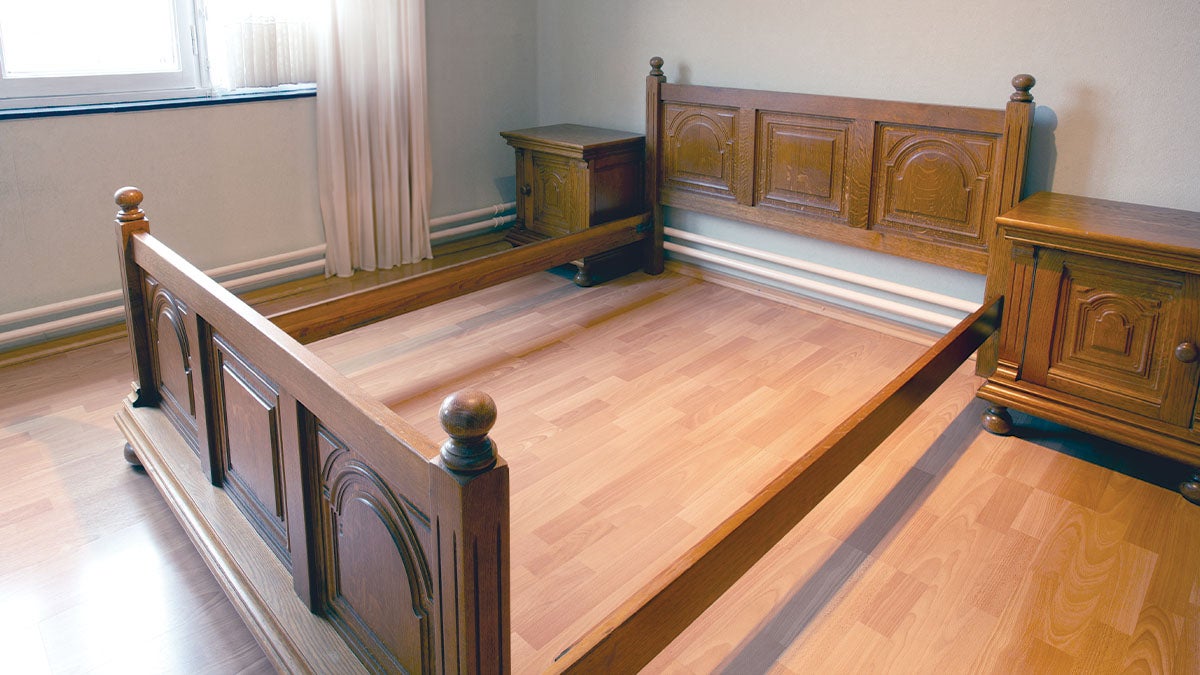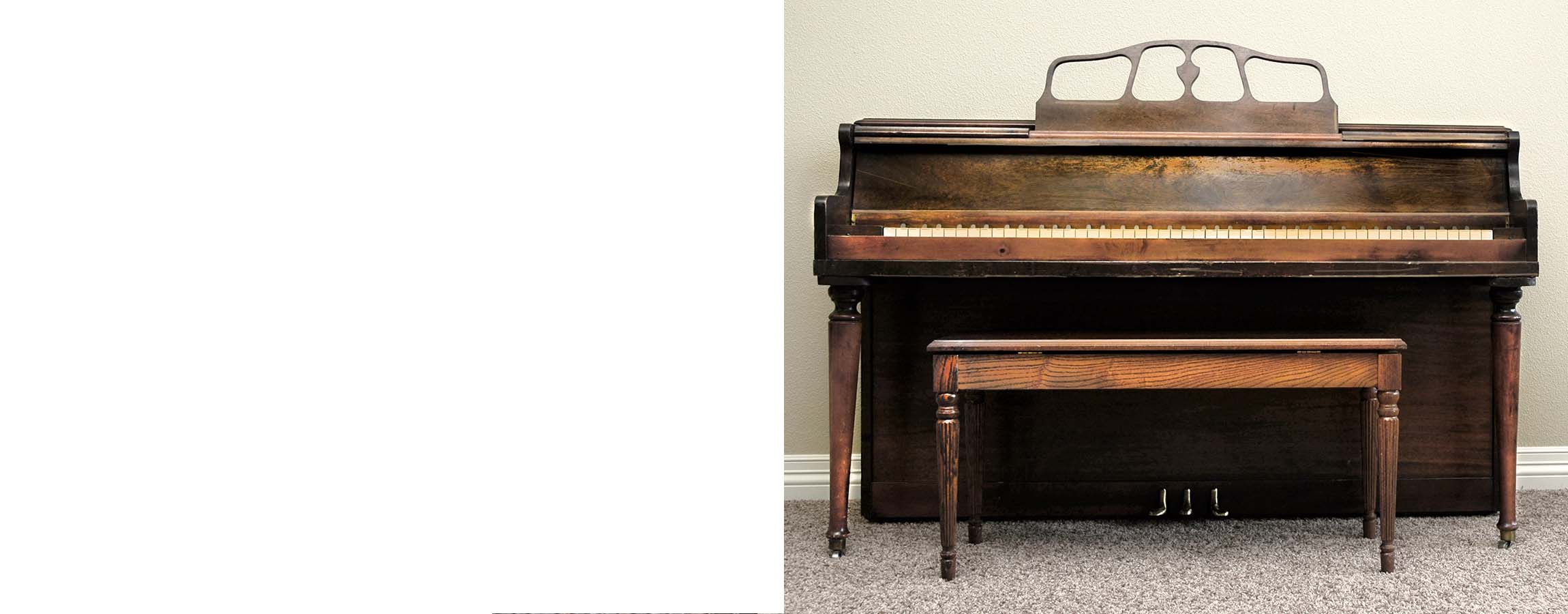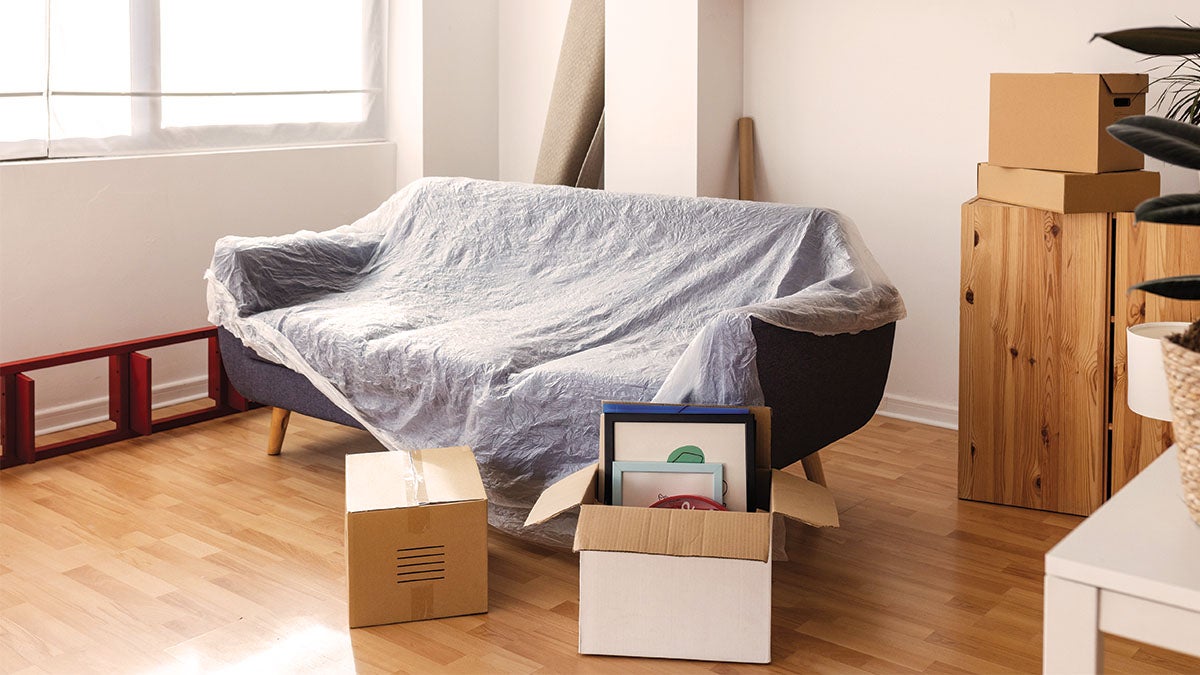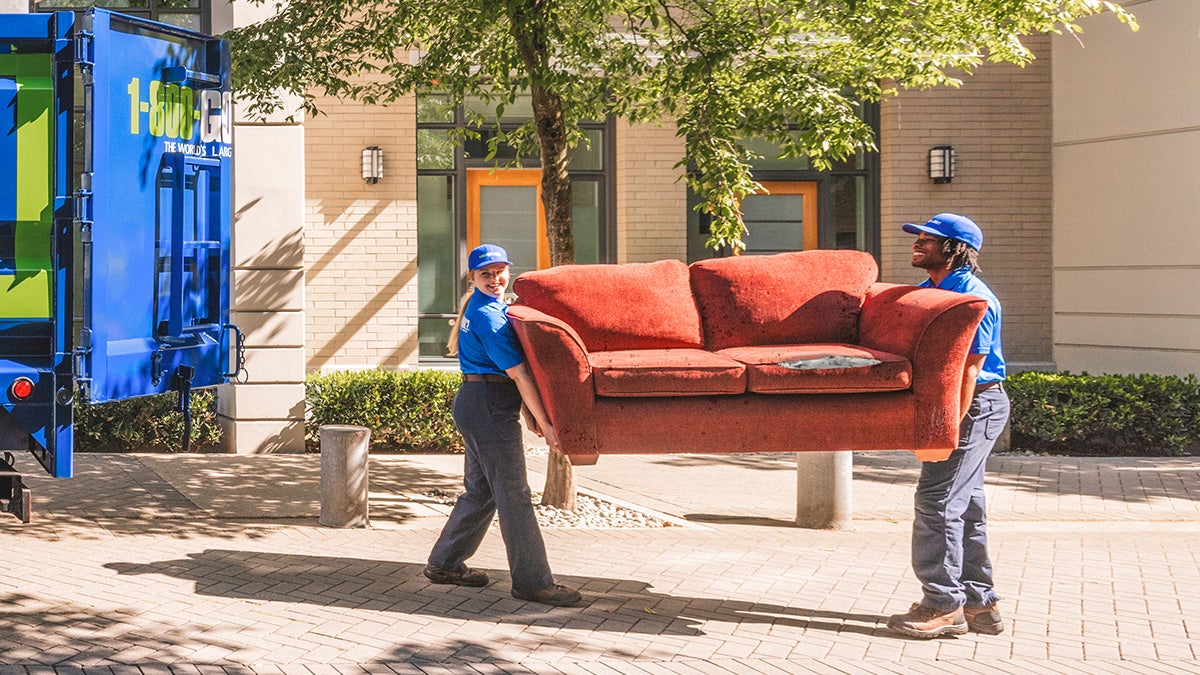Are you faced with the daunting task of getting rid of old wood furniture? Whether it's an antique piece with sentimental value, a splinter-ridden eyesore, or a victim of woodworm infestation, the process of storage or disposal can be made significantly easier by disassembling the furniture.
In this step-by-step guide, we'll walk you through the process of how to disassemble or dismantle furniture for easy transportation, what to do with pest-infested furniture, and how to store wood to prevent rotting or water damage.
Table of Contents (skip to each section)
- Six steps for taking apart old wood furniture
- Dealing with special cases: Woodworm, termites, and bedbugs
- Tips for storing wood from old furniture
- 1-800-GOT-JUNK? can take away your old wood furniture
Six steps for taking apart old wood furniture
Step 1: Gather your tools and safety fear
Before diving into the disassembly process, it's crucial to have the right tools and safety gear to make the task both efficient and safe.
Here’s what you should get together:
- Screwdriver set: A set with various sizes and types of screwdrivers will be handy for removing screws from different parts of the furniture.
- Pliers: Use pliers to grip and twist stubborn nuts or bolts that may be holding the furniture together.
- Rubber mallet: A mallet is useful for gently tapping and dislodging tight-fitting components without causing damage.
- Pry bar or crowbar: For larger or stubborn pieces, a pry bar can be instrumental in separating parts without splintering the wood.
- Safety glasses: Protect your eyes from flying debris or wood particles during the disassembly process.
- Work gloves: Sturdy gloves will shield your hands from splinters, sharp edges, and any potential hazards.
Step 2: Examine the furniture
Before starting the disassembly, carefully inspect the furniture to gain a comprehensive understanding of its construction. Look for:
- Visible fasteners: Identify any visible screws, bolts, or nails that are holding the furniture together. These are typically found in areas like joints, corners, or decorative elements.
- Hidden fasteners: Some furniture may have concealed fasteners, especially in antique or well-crafted pieces. Inspect the joints and seams for any signs of hidden screws or dowels.
- Intricate details: Take note of any intricate details or decorative elements that may impact the disassembly process. Delicate carvings, glued joints, or unique features may require special attention.
- Existing assembly instructions: If you have the original assembly instructions, refer to them for guidance. These instructions can provide valuable insights into the construction and disassembly of the furniture.
Step 3: Remove cushions, upholstery, and hardware
Prepare the piece for disassembly by removing any external elements that aren't integral to the structure.
Begin by removing any cushions, pillows, or seat pads from the furniture. Set them aside for separate disposal or potential reuse. If the furniture has fabric upholstery, carefully detach it from the frame. Use a seam ripper or scissors to cut through stitches if needed.
Locate and remove any visible hardware, such as screws, bolts, or nuts. Use your screwdriver or pliers to carefully extract these components. Keep all hardware in a secure container, such as a small plastic bag or a labeled container.
Step 4: Disassemble furniture
With the external elements removed, it's time to dismantle the furniture, starting with the more accessible and straightforward components.
- Legs and supports: If the furniture has legs, start by unscrewing or detaching them. This is usually a straightforward process, and you can often find screws connecting the legs to the frame. For additional support structures, such as crossbars or braces, identify and remove any screws or fasteners securing them in place.
- Backrests and armrests: Look for screws or bolts attaching these elements to the main frame. Gently tap on the joints with a rubber mallet to loosen any connections. If the components are glued, carefully use a pry bar or a flathead screwdriver to separate them.
- Take apart sections: If your furniture consists of multiple sections, such as modular sofas, separate them as needed. Check for any connecting mechanisms or screws that may hold the sections together. Remove drawers if necessary. Often, some stops or levers need to be manipulated for proper removal.
Step 5: Handle carefully and label parts
Handle each component with care, particularly if the furniture is delicate, antique, or holds sentimental value. Additionally, labeling parts becomes crucial for later reassembly or when passing on components for disposal or reuse.
Pay special attention to delicate or intricately crafted parts. These may include carved details, thin wooden panels, or decorative elements. Handle these components with extra care to avoid splinters, breakage, or damage.
Use masking tape, labels, or a marker to label each component. Clearly mark which part corresponds to specific areas of the furniture. If you're disassembling furniture with multiple identical parts, labeling prevents confusion during reassembly.
Step 6: Transportation and storage or disposal
With the furniture disassembled, it's time to plan for transportation and disposal or storage.
Transportation: For smaller pieces, consider using your vehicle for transportation. Ensure the parts are securely loaded to prevent damage during transit. Larger pieces may require renting a truck or hiring a removal service. Plan ahead to ensure you have the necessary transportation arrangements in place.
1-800-GOT-JUNK? can take away any old furniture you’re trying to get rid of. We’ll even take it if it isn’t disassembled. Contact one of our franchises and get an estimate.
- Disposal options: Explore disposal options based on the condition of the furniture components. Consider recycling wood if possible or contact local waste management services for guidance on responsible disposal methods.
- Store for later: If you want to reuse the furniture, find a good storage location, such as a storage unit or other off-site location. Read more tips about how to store old furniture below.
Dealing with special cases: Woodworm, termites, and bedbugs
Encountering wood-boring insects like woodworm or termites, or discovering bedbugs in your furniture can present unique challenges during the disassembly and disposal process. It's crucial to address these issues with care to prevent the spread of infestations and to protect yourself and others from potential health risks.
Woodworm
Woodworm infestation is characterized by small holes in the wood, resembling the entrance and exit points of wood-boring beetles. Additionally, you may find fine, powdery frass around affected areas.
To treat, isolate the infested furniture to prevent the spread of woodworm. Use a specialized woodworm treatment or insecticide, following the product instructions meticulously. Apply the treatment to all affected areas, ensuring thorough coverage.
After treatment, consider disposing of heavily infested parts responsibly. Avoid using infested wood for other projects to prevent the spread of woodworm.
Termites
Termites can cause significant structural damage to wooden furniture. Look for mud tubes, hollow-sounding wood, or discarded wings near the infested areas.
Consult with a professional pest control service for effective termite treatment. Isolate the furniture to prevent termites from spreading to other wooden items.
Heavily infested furniture may need to be properly disposed of to prevent further damage to your property.
Bedbugs
Bedbugs are small, reddish-brown insects that feed on blood. They leave behind small, itchy bites and often hide in cracks, crevices, and seams of furniture.
To treat, vacuum the affected furniture thoroughly, paying attention to seams and joints. Use a bedbug spray or insecticide designed for furniture surfaces. Follow the product instructions carefully.
Consider professional pest control services for severe infestations.
If the infestation is extensive, it may be necessary to dispose of the furniture. Seal the infested furniture in plastic before removal to prevent the spread of bedbugs.
Tips for storing wood from old furniture
Proper storage is not only about protecting wood from immediate environmental threats but also about maintaining its quality for future use. By implementing these tips, you ensure that the salvaged wood remains in good condition.
Elevate and ventilate
Elevating wood off the ground prevents moisture absorption, which can lead to rot and decay. Adequate ventilation helps maintain a dry environment, reducing the risk of mold growth.
Use pallets, blocks, or any other stable materials to lift the wood off the ground. Ensure there is space between each piece of wood to facilitate air circulation.
Cover and protect
Exposure to the elements can accelerate wood deterioration. Protecting the wood with a waterproof cover shields it from moisture, preventing warping, swelling, and rot.
Use a sturdy, waterproof tarp or plastic sheet to cover the stacked wood. Ensure that the cover is securely fastened to prevent it from blowing away in strong winds.
Avoid direct sunlight
Prolonged exposure to direct sunlight can lead to excessive drying and warping of wood. Protecting wood from the sun helps maintain its structural integrity and minimizes the risk of cracks.
Store the wood in a shaded area, such as a covered porch or under a protective structure. If this isn't possible, ensure that the wood is adequately covered to shield it from direct sunlight.
Inspect regularly
Wood is susceptible to environmental changes. Regular inspections allow you to catch issues, such as mold, rot, or insect activity early on.
Periodically check the stored wood for signs of damage. Check for mold, discoloration, or any unusual markings. If you detect issues, address them promptly with appropriate treatments.
1-800-GOT-JUNK? can take away your old wood furniture
By following these steps, you can make the process of disposing of old wood furniture more manageable, whether it's an antique treasure or a dilapidated eyesore. Additionally, proper wood storage practices will help ensure that salvaged pieces remain in good condition for future use.
If you’d rather avoid all the hassle, let 1-800-GOT-JUNK? remove that old furniture for you. We’ll recycle what we can and dispose of the rest safely and responsibly. That way, you don’t have to worry about storage or maintenance.
Find out more about disposing of old furniture with 1-800-GOT-JUNK?.






